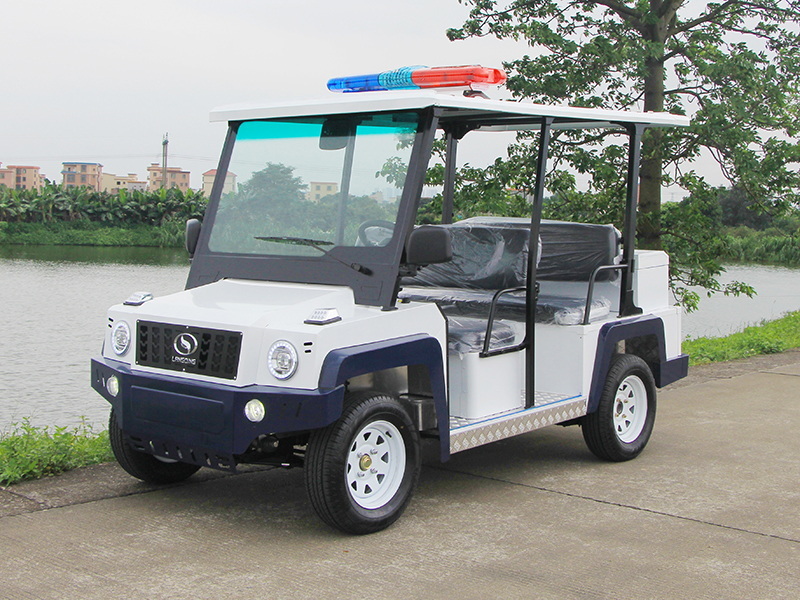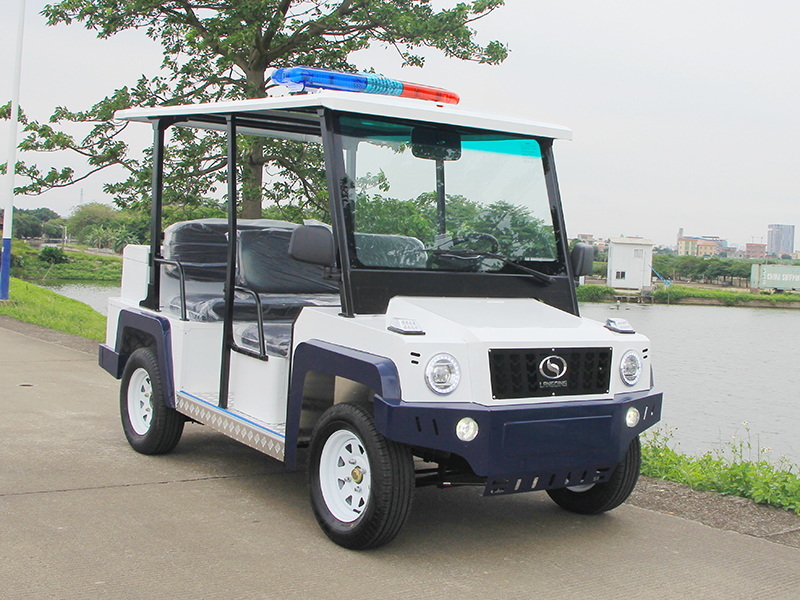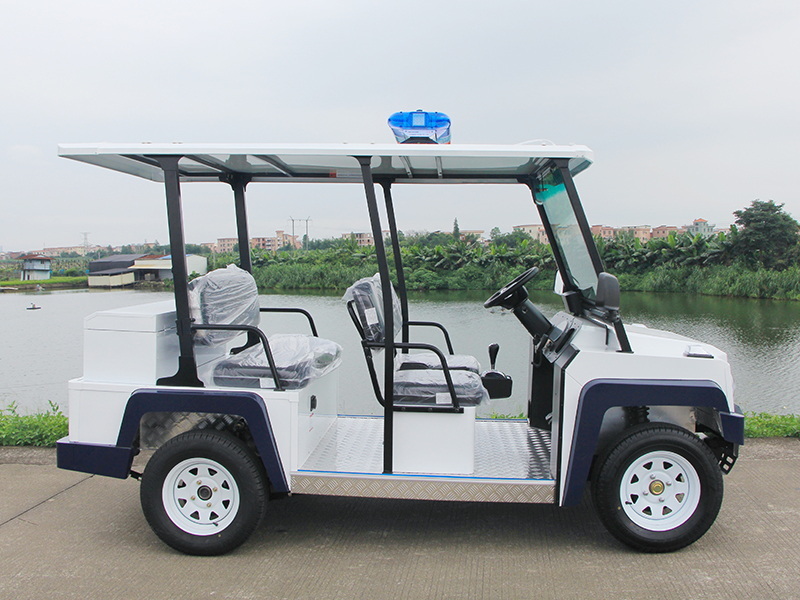Content Menu
● Global Overview of the Enclosed Electric Patrol Car Market
● Countries Driving Demand for Enclosed Electric Patrol Vehicles
>> China: The Global Powerhouse in Electric Patrol Vehicles
>> United States: Accelerating Police Fleet Electrification
>> United Kingdom: Embracing Electric Patrol Cars for Sustainability
>> Scandinavia: Leading Market Penetration with Clean Energy
>> United Arab Emirates: Showcasing Innovation and Luxury
>> Emerging Markets: Growing Demand in South America, Africa, and the Middle East
● Key Drivers of the Enclosed Electric Patrol Car Market
● Technological Innovations Shaping the Market
● Market Segmentation and Regional Dynamics
● Conclusion
● FAQ
>> 1. What is the current size and future growth forecast of the enclosed electric patrol car market?
>> 2. Which countries are the biggest adopters of enclosed electric patrol vehicles?
>> 3. What are the main benefits of enclosed electric patrol vehicles?
>> 4. What challenges does the enclosed electric patrol car market face?
>> 5. How are technological advancements influencing the market?
The enclosed electric patrol car market is experiencing rapid growth as law enforcement agencies worldwide seek sustainable, efficient, and technologically advanced vehicles for public safety. This article explores the countries leading the demand for enclosed electric patrol vehicles, the driving factors behind this trend, and the future outlook of this expanding market.

Global Overview of the Enclosed Electric Patrol Car Market
The global shift towards electrification, sustainability, and smart mobility is transforming the automotive and public safety sectors. Enclosed electric patrol vehicles, designed to offer weather protection, enhanced security, and sufficient space for officers and equipment, are increasingly replacing traditional internal combustion engine (ICE) patrol cars.
The enclosed electric patrol car market is projected to grow significantly, with revenues valued at approximately USD 1.5 billion in 2024 and expected to reach USD 4.2 billion by 2033, growing at a compound annual growth rate (CAGR) of around 15.5% from 2026 to 2033. This growth is fueled by rising fuel costs, environmental concerns, government incentives, and advancements in battery and vehicle technology.
Countries Driving Demand for Enclosed Electric Patrol Vehicles
China: The Global Powerhouse in Electric Patrol Vehicles
China leads the global electric vehicle market by a wide margin, producing over 26 million vehicles annually and accounting for nearly 30% of passenger vehicle sales as new energy vehicles (NEVs) in 2023. The government's stringent emissions regulations and subsidies for electric vehicles have accelerated the adoption of enclosed electric patrol cars in urban centers.
- Major cities deploy electric patrol vehicles for community policing, parks, and pedestrian zones.
- Domestic manufacturers like BYD and Nio are investing heavily in electric powertrain and battery technologies tailored for patrol vehicles.
- The rapid urbanization and pollution control policies further boost demand for sustainable patrol solutions.
China's dominance in electric commercial and passenger vehicles positions it as the largest market for enclosed electric patrol cars globally.
United States: Accelerating Police Fleet Electrification
The United States is witnessing a growing trend towards electrifying police fleets:
- California's South Pasadena Police Department has fully transitioned to electric patrol vehicles, using models such as Tesla Model 3 and Model Y.
- Federal initiatives like the Inflation Reduction Act and state-level Zero Emission Vehicle (ZEV) mandates promote electric vehicle adoption.
- Police agencies prioritize high-performance electric vehicles with extended range and reliability for patrol duties.
North America currently leads the enclosed electric patrol car market due to advanced infrastructure, government incentives, and increasing environmental awareness.
United Kingdom: Embracing Electric Patrol Cars for Sustainability
The UK is actively integrating electric patrol vehicles into police fleets as part of its broader environmental commitments:
- Forces such as Gloucestershire Police and the Metropolitan Police have introduced fully electric vehicles for routine patrols.
- The UK benefits from a dense EV charging infrastructure, facilitating operational efficiency.
- The government's net-zero targets and green policies support the transition to electric patrol cars.
The UK's experience highlights the balance between operational needs and sustainability goals within the enclosed electric patrol car market.
Scandinavia: Leading Market Penetration with Clean Energy
Norway, Sweden, and Finland are pioneers in electric vehicle adoption, supported by clean electricity grids and strong government incentives:
- Norway leads globally with over 90% of new car sales being electric, including patrol vehicles.
- Scandinavian police forces are early adopters of enclosed electric patrol cars, leveraging advanced EV infrastructure.
- The region's success demonstrates how renewable energy integration complements electric patrol vehicle deployment.
Scandinavia's model shows the potential for widespread electrification of public safety fleets in regions with supportive policies and clean energy.
United Arab Emirates: Showcasing Innovation and Luxury
The UAE, particularly Dubai, incorporates electric vehicles into its police fleet as part of its smart city and sustainability vision:
- Dubai Police use electric patrol cars such as the Hongqi E-HS9 and Audi RS E-Tron GT.
- The fleet includes luxury and high-performance electric vehicles to demonstrate technological leadership.
- Investments in EV infrastructure and green initiatives align with broader regional sustainability goals.
The UAE exemplifies how affluent and technologically advanced regions are adopting enclosed electric patrol cars for both functionality and image.
Emerging Markets: Growing Demand in South America, Africa, and the Middle East
Emerging markets are beginning to adopt enclosed electric patrol vehicles as urbanization and economic growth accelerate:
- South America and Africa are experiencing increased demand for affordable, durable electric patrol cars tailored to local conditions.
- Middle Eastern countries are investing in EV infrastructure and green mobility projects to support law enforcement electrification.
- Brazil's automotive industry focuses on cost-effective solutions, driving demand for economical enclosed electric patrol vehicles.
These regions represent significant growth opportunities for the enclosed electric patrol car market as infrastructure and regulatory frameworks develop.

Key Drivers of the Enclosed Electric Patrol Car Market
Several factors are propelling the growth of the enclosed electric patrol car market globally:
- Environmental Regulations and Sustainability Goals: Governments worldwide are enforcing stricter emissions standards and promoting zero-emission vehicles to combat climate change.
- Cost Efficiency: Electric patrol cars offer lower operating and maintenance costs compared to ICE vehicles, reducing fleet expenses.
- Technological Advancements: Improvements in battery energy density, charging speed, and vehicle performance make electric patrol cars more practical and reliable.
- Government Incentives: Subsidies, tax breaks, and mandates encourage public agencies to adopt electric vehicles.
- Urbanization and Public Image: Growing urban populations and community engagement efforts push police departments to adopt environmentally friendly patrol vehicles.
The market is also influenced by challenges such as limited charging infrastructure in some regions and the higher upfront cost of electric patrol vehicles, but these are mitigated by long-term savings and technological progress.
Technological Innovations Shaping the Market
The enclosed electric patrol car market benefits from ongoing technological innovations:
- Battery Technology: Transition to solid-state batteries promises higher energy density, faster charging, and enhanced safety, reducing costs and improving vehicle range.
- Manufacturing Automation: Advanced robotics, AI-driven quality control, and digital twin technology optimize production, ensuring consistent quality and reducing costs.
- Connectivity and Autonomous Features: Integration of sensors, communication systems, and advanced driver-assistance systems (ADAS) enhances patrol vehicle capabilities and officer safety.
- Lightweight Materials: Use of advanced composites reduces vehicle weight, improving energy efficiency and performance.
These innovations collectively enhance the operational effectiveness and sustainability of enclosed electric patrol vehicles.
Market Segmentation and Regional Dynamics
| Region | Market Characteristics | Key Drivers |
| North America | Advanced infrastructure, high adoption rates | Government incentives, environmental policies |
| Asia-Pacific | Rapid urbanization, pollution control measures | Large domestic manufacturers, subsidies |
| Europe | Strong electrification policies, green deal targets | Emissions regulations, advanced R&D |
| Middle East | Growing EV infrastructure, luxury vehicle adoption | Smart city initiatives, sustainability goals |
| Latin America & Africa | Emerging markets, increasing urbanization | Economic growth, demand for affordable EVs |
These dynamics influence the pace and scale of enclosed electric patrol vehicle adoption worldwide.
Conclusion
The enclosed electric patrol car market is poised for substantial growth as countries worldwide embrace electrification for public safety fleets. China, the United States, the United Kingdom, Scandinavia, and the UAE lead the demand, driven by environmental policies, technological advancements, and government incentives. Emerging markets in South America, Africa, and the Middle East also present promising opportunities as infrastructure and urbanization expand.
Technological innovations in battery technology, manufacturing, and vehicle connectivity further enhance the appeal and functionality of enclosed electric patrol cars. Despite challenges such as initial costs and infrastructure gaps, the market's trajectory is upward, reflecting a global commitment to sustainable, efficient, and smart law enforcement solutions.

FAQ
1. What is the current size and future growth forecast of the enclosed electric patrol car market?
The market was valued at approximately USD 1.5 billion in 2024 and is projected to reach USD 4.2 billion by 2033, growing at a CAGR of about 15.5% from 2026 to 2033.
2. Which countries are the biggest adopters of enclosed electric patrol vehicles?
China leads globally, followed by the United States, the United Kingdom, Scandinavian countries, and the United Arab Emirates.
3. What are the main benefits of enclosed electric patrol vehicles?
They offer zero emissions, lower operating costs, quieter operation, weather protection, and enhanced security features, making them ideal for urban and community policing.
4. What challenges does the enclosed electric patrol car market face?
Challenges include limited charging infrastructure in some regions, higher initial acquisition costs, and the need for vehicles with sufficient range and performance for diverse patrol duties.
5. How are technological advancements influencing the market?
Advances in battery technology, manufacturing automation, connectivity, and lightweight materials are improving vehicle range, performance, safety, and cost-effectiveness.










































